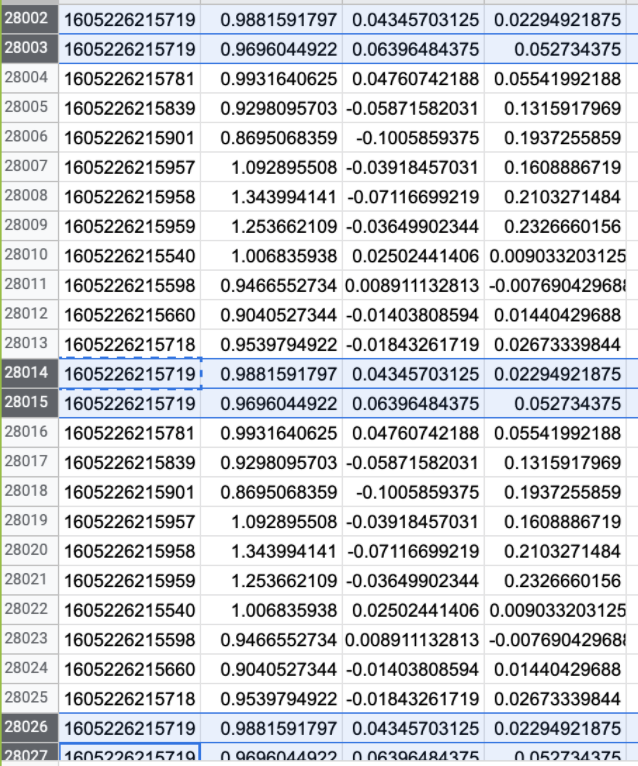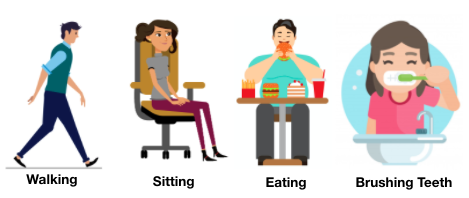Challenge 1
- Most of the work in this area uses a combinations of sensors at multiple locations (ankle, chest, wrist etc). Most of these sensors are not available to users in real-time making such work impractical.
- Therefore, we are targeting human activity detection using only a wrist watch which is very common nowadays (According to Pew Research Center, About one-in-five Americans use a smart watch or fitness tracker).
- Combination of multiple sensors provides a good set of distinguishing features which makes it easy for the model to detect multiple activities.
- Whereas, in this project, the limited set of sensors made it difficult for our model to distinguish between activities.
- To fix this problem, we have used multiple approaches such as merging similar activities, adding untargeted activities, adding features like mean and standard deviation etc.
Challenge 2
- We started our project using the MotionSense HRV wearable and the mCerebrum app to collect real-time data.
- However, the app was giving a lot of problems. For example, we were seeing multiple data values for same timestamps in the csv file as shown in the following figure:

- Debugging the MotionSense HRV wearable and app took around 2 weeks.
- This left us with less time to work on the project using Apple Watch.
Challenge 3
- Model training and real-time inference are performed on data collected from different sensors.
- To prevent the trained model from getting biased to data from one type of sensor, we trained the model on two different datasets (using different sensors).
- We observed that using this combination of datasets improved our real-time inference accuracy significantly.
Challenge 4
- To train our model with good accuracy, we needed datasets with a large number of users and with our target sensors and activities.
- Looking for such relevant datasets took a significant amount of time.
 Home
Proposal
Technical Approach
Challenges Faced
Related Work
Video Demo
Repo
Home
Proposal
Technical Approach
Challenges Faced
Related Work
Video Demo
Repo